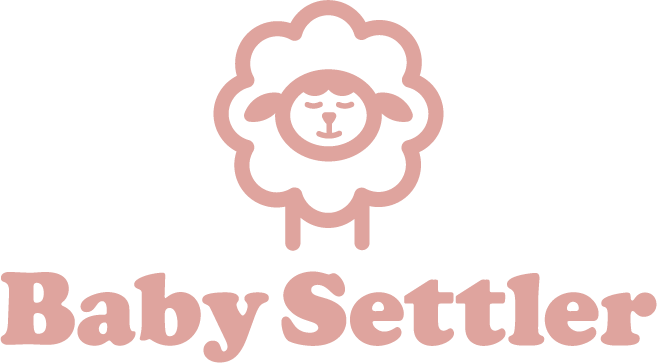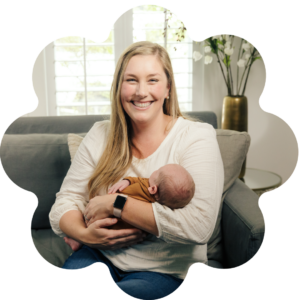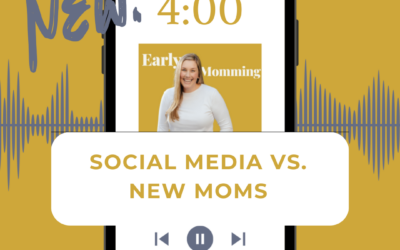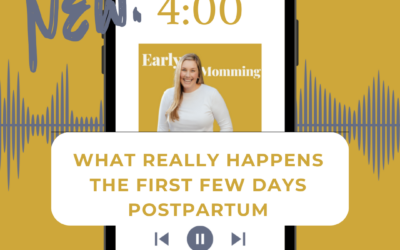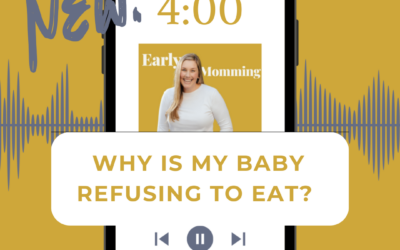
Taking your baby from breast to bottle may seem like a daunting task, but it doesn’t have to be. Knowing a few tips and tricks for introducing your baby to a bottle can make the whole process less stressful and way more comfortable for you.
Plus, for a busy breastfeeding mom, being able to switch it up and give your baby a bottle can make life a lot simpler!
When Should A Baby Start Bottle Feeding?
There is a lot to take into consideration when answering this question.
First of all, it’s important to note that breastfeeding isn’t available to every mother.
“Some parents cannot produce a healthy breast milk supply, while others may take certain medications or need to undergo a medical treatment that isn’t breastfeeding safe,” explains Very Well Family.
While the World Health Organization recommends parents breastfeed exclusively for at least six months, and then adding in foods along with milk from there, this is not possible for all women, and some need to bottle feed earlier.

One thing about introducing a bottle to a baby too early is nipple confusion. However, starting with a bottle too late could result in your little one just rejecting the change completely.
Special tip for moms who are going back to work: Don’t wait until the last week of maternity leave to start incorporating a bottle into your baby’s feeding routine! After your baby is one month old and has got a good handle on breastfeeding, you can start offering them a bottle so that they can get used to it.
What About Nipple Confusion?
Nipple confusion means that a baby tries to breastfeed exactly how they would feed from a bottle. The two actions are not the same thing. “Drinking from a bottle doesn’t require the same technique. The milk will flow no matter what a baby does because of gravity. When a baby feeds from a bottle [they] don’t have to open their mouth wide or create a tight seal with properly turned-out lips,” says Healthline Parenthood.
This can result in a frustrated baby not being able to get milk when you’re trying to breastfeed, and long stretches without breastfeeding your child can cause your milk production to slow.
To avoid nipple confusion, it’s best to wait to introduce your baby to a bottle until they’ve completely got the hang of breastfeeding.
If breastfeeding isn’t going well, check out my course, Breastfeeding Made Simple, to help you get through the trouble you’re facing when it comes to feeding your baby.
When you’re ready to start incorporating a bottle into their feeding routine, follow these 4 tips:
- Choose The Right Bottle And Teat
There are so many options when it comes to baby bottles!
One mom told Parents that buying the same brand of bottle as her breast pump was a great move, as she could express directly into the bottle her baby would feed from.
Then, when it comes to shape, some bottles have an angle to them while others are straight – angled bottles reduce the chance of your little one swallowing air when they’re feeding.

It’s not just the bottle you have to be selective about, but the teat, too. Jennifer Buchanan, a nurse at Children’s Hospital Los Angeles, recommends wide-based nipples, “Purchase a bottle with a nipple that is more similar to the human breast. These nipples are usually wide-based with shorter nipple heights. The nipple requires that the baby take a larger amount of the nipple into its mouth, similar to breastfeeding.”
You want the bottle nipple to be as close to the real deal as possible to help your baby transition.
- Get Some Help
Babies learn very quickly that when they scream, their mom comes rushing! So, if you’re in the house while the baby is getting used to the bottle, if they’d rather breastfeed, they’ll let you know.
After all, if mom is offering a bottle, they might be questioning why they aren’t getting the real thing!
Cloud Mom recommends having someone else feed your little one with the bottle so that they realize that breastfeeding isn’t always an option.
This is also an amazing benefit of introducing bottle feeding to your baby – you’re able to have a little more freedom of movement!
- Distract Them A Bit
If your baby is super focused on how much they are not enjoying the bottle, distract them a bit so that they’re not only concentrating on the bottle.
You can walk outside with your baby, or just around the house, to change up their surroundings and give them other things to focus on.
The Pump Station also suggests that breastfeeding moms can first start the feed by breastfeeding, especially if the baby is fussy, and then, once calm, switch to the bottle. This can also be done with a pacifier.

- Change Up The Milk Temperature
If you’ve tried a bunch of different bottles and teats, your baby is not letting anyone else feed them, and nothing is interesting enough to distract them from how much they don’t like being bottle fed, try changing up the temperature of the milk.
While milk is naturally lukewarm, your baby might prefer it a bit colder or room temperature.
Find Your Mom Tribe also has a suggestion for teething babies if they’re refusing the bottle: put the bottle teat in the fridge. “This will not only help them adjust to a bottle faster, but will also soothe their gums. If your baby is not teething, however, it could help to put the nipple in a bit of warm water so that it’s not completely cold when it reaches the baby’s mouth.”
If you’re reading this to help prepare for your new little bundle of joy, and you’re feeling overwhelmed, don’t worry! This is normal. To help new moms feel even more excited and confident for their new arrival, I’ve put together a free mini course, Prepare For Baby. Register now!
